Virginia creeper (Parthenocissus quinquefolia)
Vitaceae, the grape family
How to recognize Virginia creeper. This is a woody vine (liana) with alternate palmately compound leaves. It looks sort of poison-ivy-like, but inasmuch as that itch-inducing devil is distinctly trifolioliate, they are easy to separate.
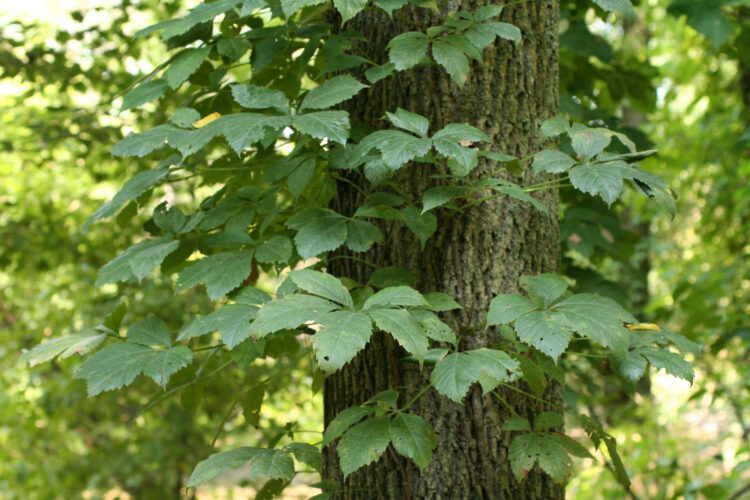
Virginia creeper is palmately compound, and climbs trees.
Another difference between Virginia creeper and poison ivy is the manner in which they attach themselves to trees: poison ivy with adventitious roots giving it a “hairy rope” appearance, Virginia creeper with elegant disc-tipped tendrils that resemble the feet of tree frogs.
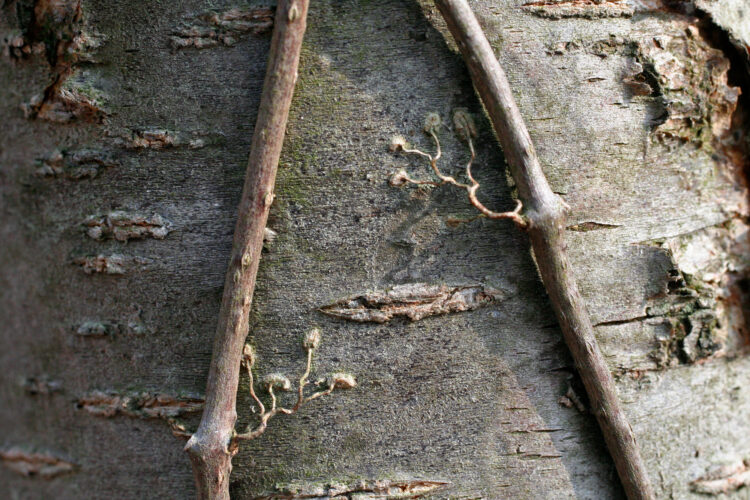
Tree frog feet!
These two lianas often grow together.
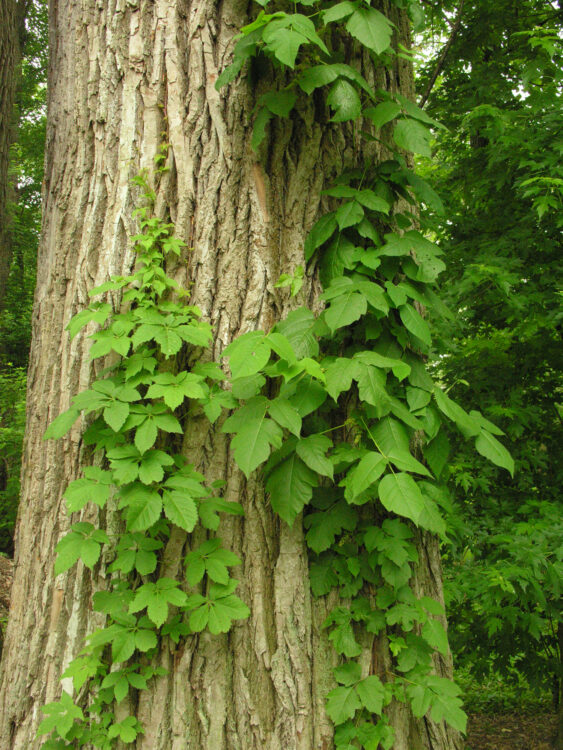
Virginia creeper on the left; poison ivy right.
Here they are mingling even closer.
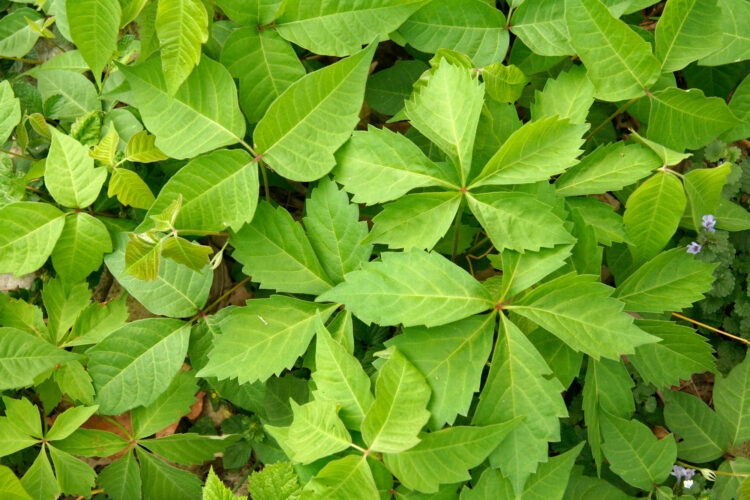
Don’t you want to warn Virginia that they might get poison ivy?
Where to find Virginia creeper. E. Lucy Braun, in The Woody Plants of Ohio (1961, 1989; The Ohio State University Press) tells us that this species is “Widely distributed throughout the Deciduous Forest in a variety of habitats. Most conspicuous in late autumn because of the brilliant coloration of the leaves; branches of inflorescence red in late fall, contrasing with the blue-black berries.”
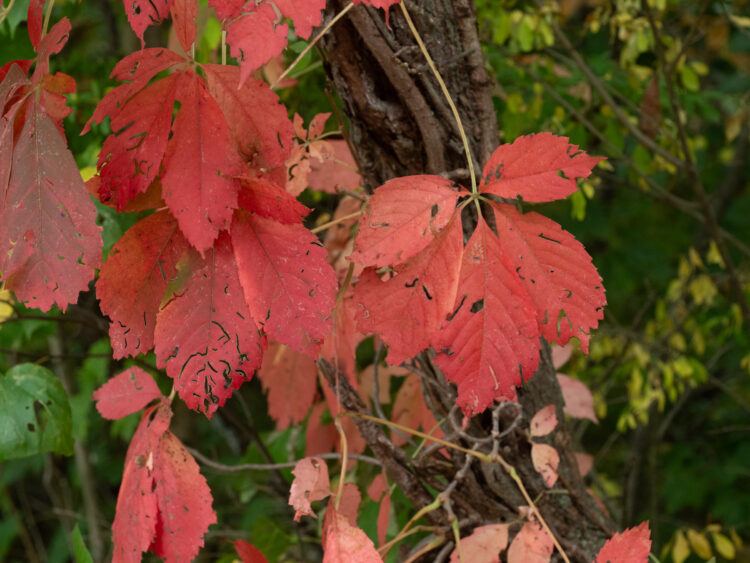
Looking pretty red in late September!
Scanned Image from an Old Book
(Flora of West Virginia, by P.D. Strausbaugh and Earl L. Core)
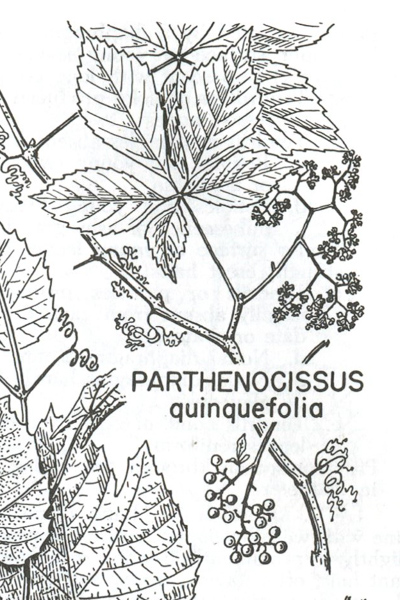
Virginia creeper
Ooh ooh. I have a question!
Jeepers it looks kinda poison-ivy-like. Set froth three differences.
Set froth? Don’t you mean set forth? Anyhow, the leaves are palmately compound; attachment is by disc-tipped tendrils; fruits are blue-black.
